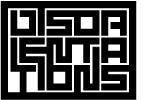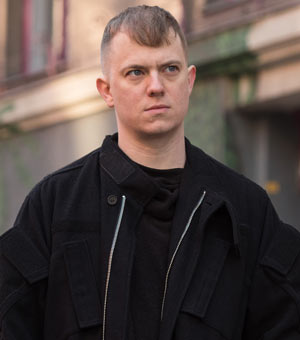Otto Zitko
by Travis Jeppesen on July 3, 2013
Otto Zitko paints lines. Long lines curving and curling, extending into nowhere, the void. A line never ends. It just goes and goes, infinite in its stark simplicity and ambiguity. Zitko uses lines to create environments. Such as the maze he installed at the 48th Venice Biennale. For his exhibition in Prague at the Austrian Cultural House, he limits himself to two colors: red and orange. Paints the entire room with them, totally changing the environment and violating the sacred white space of the gallery’s walls, effectively turning it into a fiery red-orange swirl, another world. Otto Zitko didn’t always paint lines. He used to paint other things, but in the late ‘80s, he decided to stop painting everything, everything except for lines. Where do Zitko’s lines lead? They are all contained in the same space. The Austrians have been kind enough to provide chairs for us to sit in and study these lines. Try to locate where it begins, follow its path throughout the walls and ceiling of the gallery, all the way to the end. And begin again. A line implies the dimension of time. Zitko’s lines illustrate time. You may sit in the gallery for hours, lost in Zitko’s maze of lines, until you ask yourself what time it is. The time is always now. It is never then or there. Zitko’s decision to stop painting in a conventional way wasn’t a nihilistic action, a gesture of aligning himself with the whole “painting is dead” debate that’s been going on for far too long. Rather, his intention to paint lines was and is based on the firm belief that this is the only way to develop painting any further. He is striving for a very specific and idiosyncratic form of purity that he can only hint at. A primitive gesture that becomes a reflexive metaphor – a line representing all lines, only gaining meaning in the context of the space it fills.

Originally published in the now-defunct Prague magazine Think Again in 2004.
Re-published in Disorientations: Art on the Margins of the “Contemporary”.


Leave your comment